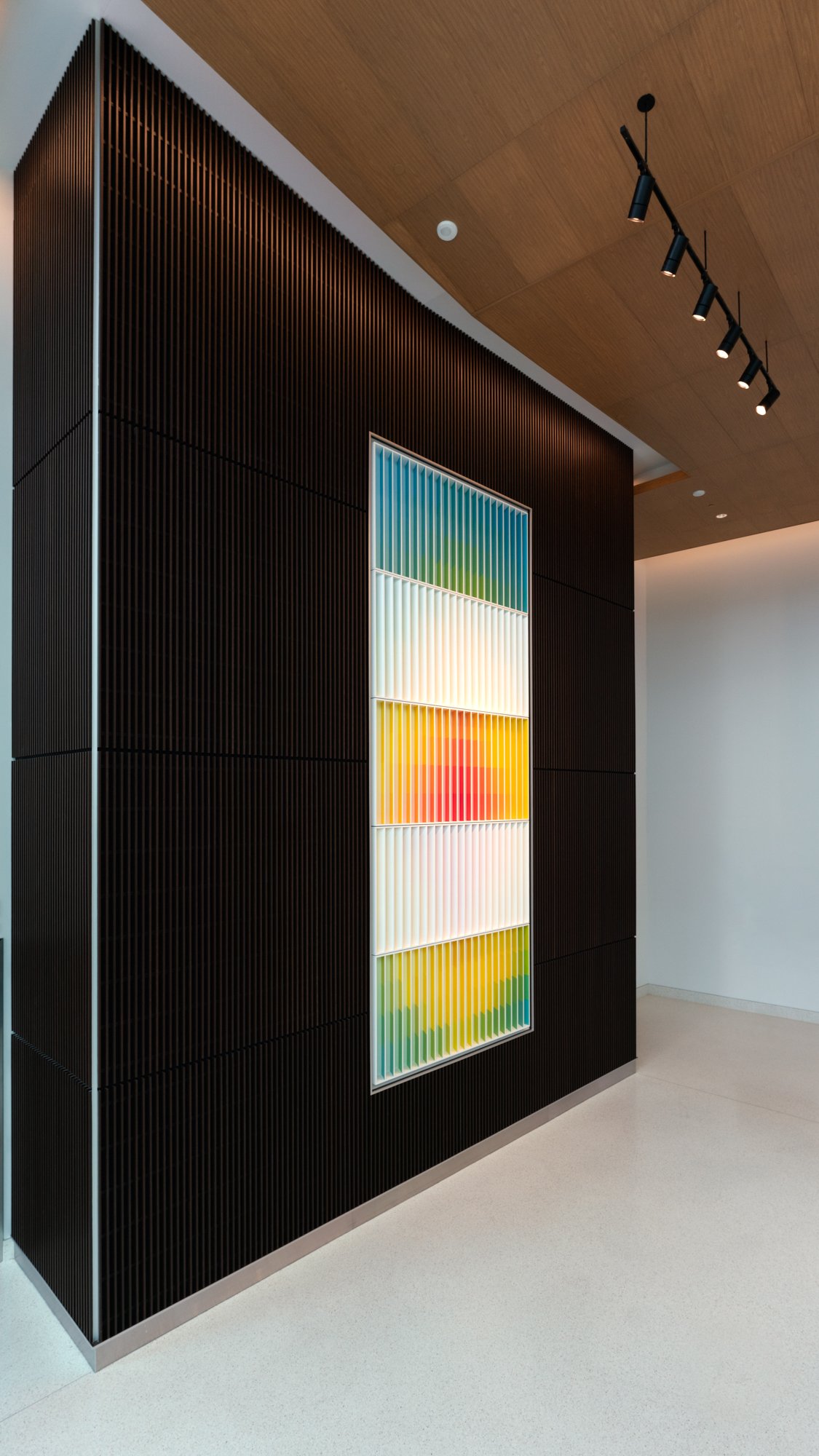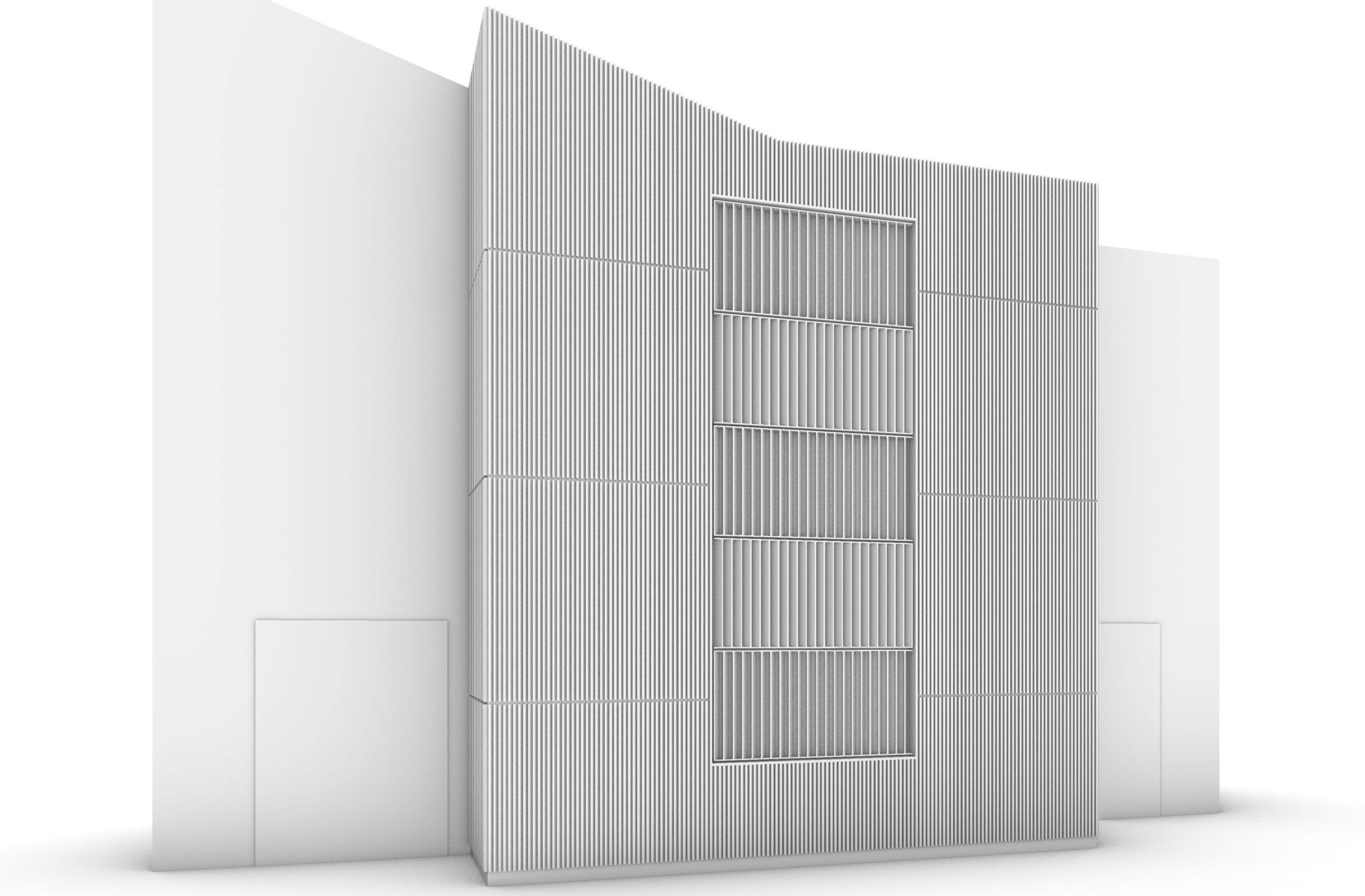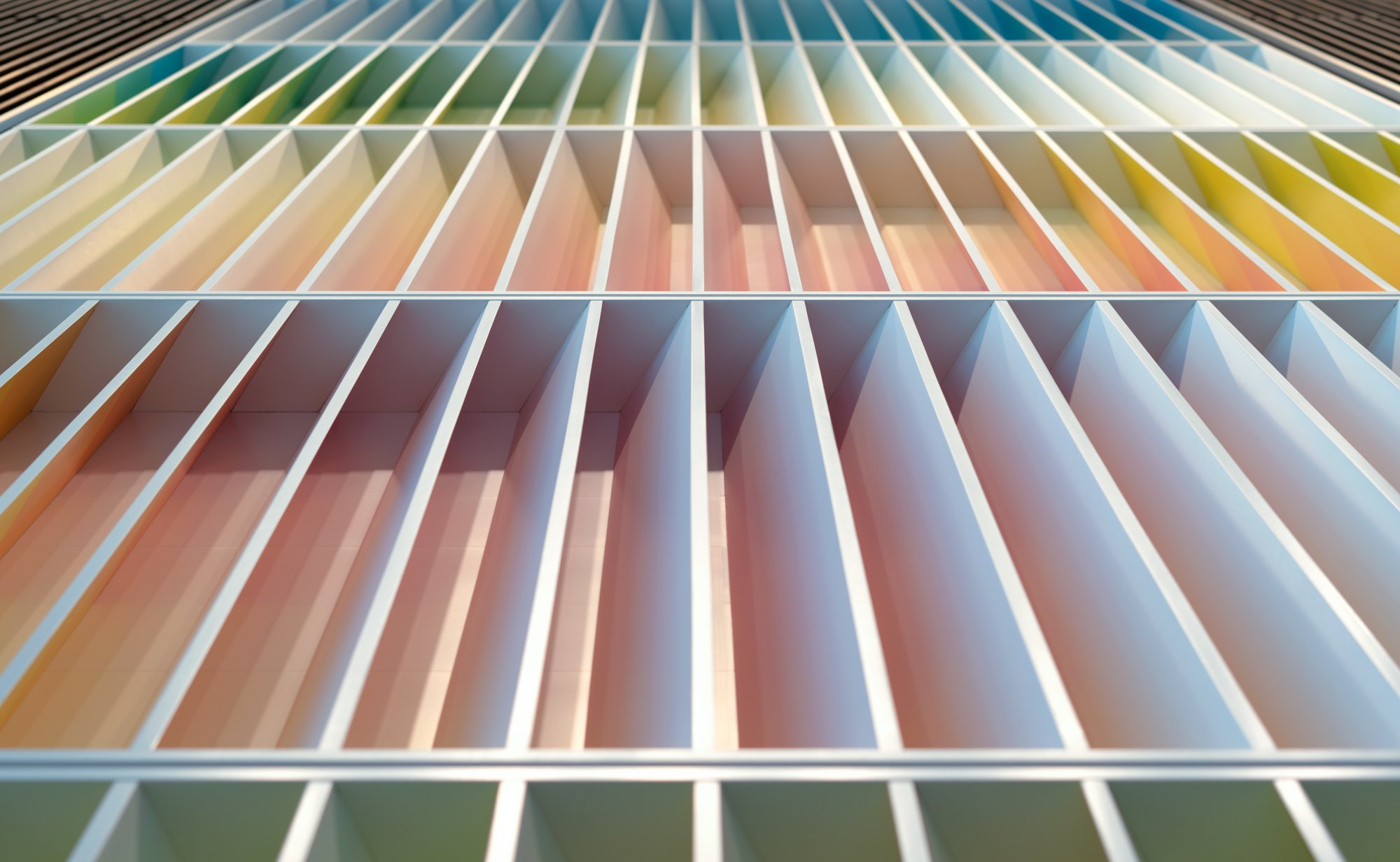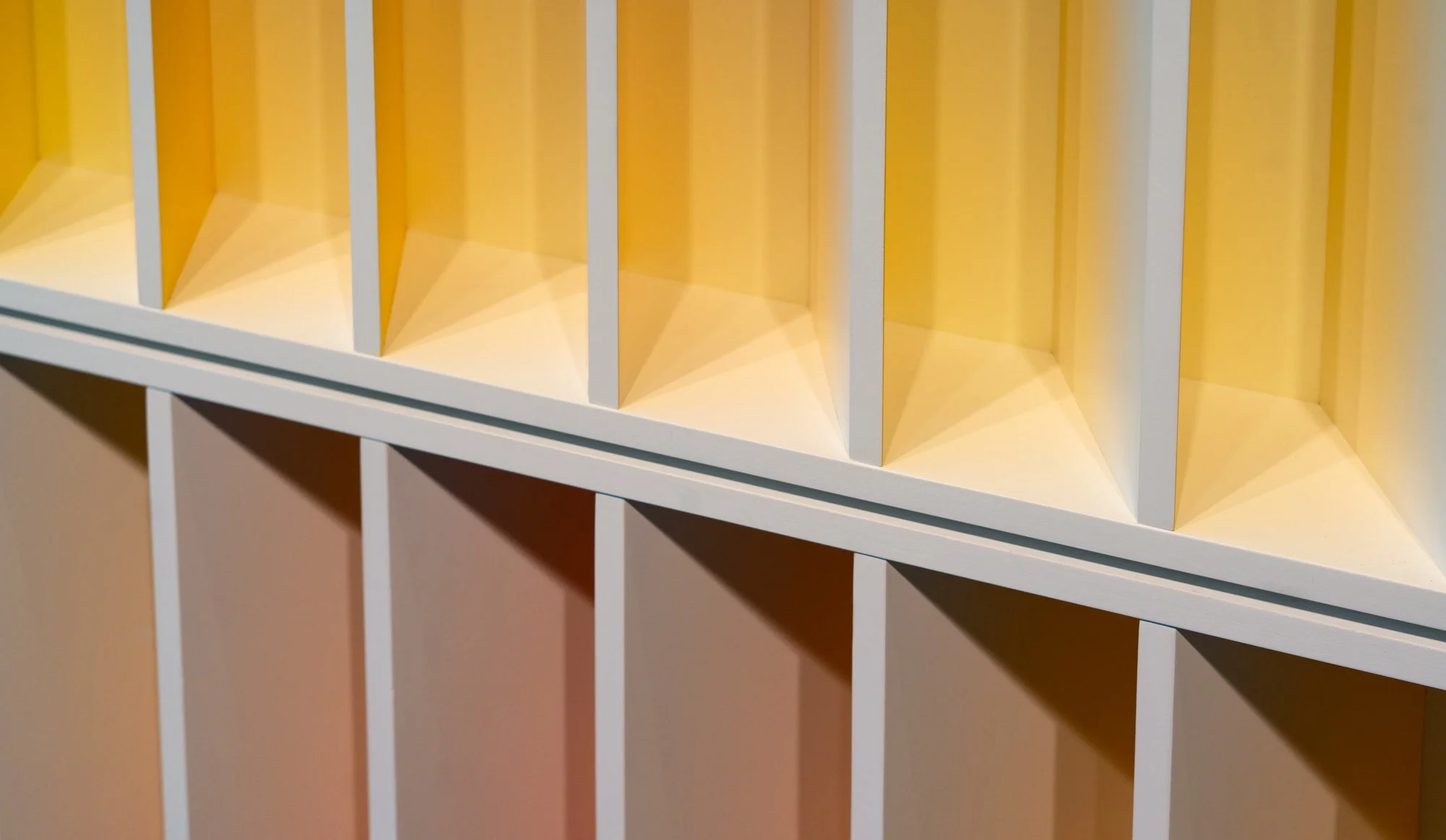Artist Spotlight: Christopher Derek Bruno
In conversation with Art + Curatorial Manager Laura Beshears, Atlanta-born Christopher Derek Bruno goes in depth on his first healthcare commission for the Piedmont Atlanta Hospital’s art program.
ad radices montis (2020)
20 ft. x 8 ft. x 6 in., Acrylic on birch panel
WORKING WITHIN THE HEALTHCARE CONTEXT
Laura
Your installation was a really exciting project for Farmboy, and we're grateful to you for making this happen. There was a lot of collaboration between you, Felicity (Art Director), Ariel (Vice President), and the team that was working on this.
We thought we could start by talking about the context of the work, which is the Piedmont Atlanta Hospital. How did this context influence your design for the installation? You had mentioned at one point that the hospital’s specialty in cardiology inspired you. Maybe you can speak to that context and the context of cardiology [as well].
Christopher
I don't have the most positive experiences with the healthcare and hospital environment, so it was really interesting to go in deep and understand why I had the feelings I did and what were the experiences that led to that kind of, not negative sentiment, but more like almost fear that was connected to it. And then I was thinking about the times I had been in and around the healthcare and hospital environments. What were the things that could have made my experiences better? Hospitals are like microcosms of hundreds of activities happening all over the place, all of the time. I enjoyed thinking about that push and pull that must be the existence for both the workers and also the people, the individuals that are visiting.
Kind of like the dualities of what happens in a hospital: all of the great things in the world can take place there and all of the worst things in the world can take place simultaneously.
And then learning about the cardiac side, I kind of went back to high school biology brain and just started thinking about what respiration is, what are these rhythms that happen internally, and how are they connected to the outside world and how all of our individual rhythms interact with each other. And then on a micro scale, all the way down to a singular cell.
I was also thinking a lot about ways of using movement as a ways of meditation and introspection. I think in the worst of my experiences in the healthcare world, I just really remember walking around a lot seeking purpose or seeking something familiar. Just having to move to process the things that are happening in the world. I really wanted to produce an object that rewarded that kind of movement or that kind of idea that someone is seeking or needing just to move. And then having a positive visual experience, and particularly an art experience as a reward for the desire to move.
EXPLORING PERSPECTIVES
Laura
I was picking up on how your work is really about perception, and I love that as viewers walk around your installation, they can see many different perspectives. This idea is really embedded in your work. Can you talk about your studio process and how you're able to achieve this effect?
Christopher
Specific to this piece, one of the beautiful things about this opportunity is that I was afforded the time to make 11 prototypes for this object, as opposed to having to produce a specific result for this specific thing. I was allowed to explore and share that exploration with really positive encouragement from the team at Farmboy.
In these 11 prototypes, the big investigations are: how do the angles affect the image? Where does the role of depth come in? Light is entering into these forms, bouncing around, and coming back based on that angle of incidence, but then the physical depth of the object also magnifies or reduces the volume of light that's allowed to move. The spacing of the formal components is another factor that allowed the change in volume of color that bounced back. And then finally, in testing color relationships in themselves, the really interesting thing is that cooler colors seem to recede, warmer colors appear to come forward even with the same saturation and hue.
It's really interesting to try to individually test the variables to see what the greatest possible relationship is – I think that's another really easy conceptual tie in to what takes place in the building itself. There are all of these minute factors that come together to produce an experience of the change in life that happens in the healthcare environment.
In this piece, one of the big factors that I'm working with is the idea that all the viewers perceive are the evidence of these relationships. From head-on, you're only seeing white planes. You're perceiving color but what's being presented is really an all-white set of surfaces. But the evidence of the idea is shining through or bouncing through. The process side was really just how to create what series of formal arrangements, what series of colors, what series of things could really support that in this massive ultra-portrait format.
CURIOSITY THROUGH A LIMITED COLOR PALETTE
Christopher
I've been working with a limited palette a little over a decade now because it is just this most fundamental primary set. Through the set, almost everything is possible, and trying to use that limited number and the tones that come from the base origin can produce something that is greater than the sum of its parts. At the same time, rewarding someone's curiosity, so as you move around the space, you get to see this larger, softer, glowing composition that's actually comprised of individual cells in and of itself. All of the mixing and all of the blending that's taking place is happening in physical space. It's not a product of my hand, it's a product of the space and your mind, and I think that part is another unique thing that only happens in scale and only happens in these types of installations where things are bigger than a room, bigger than human scale.
The Final Impact On The Viewer
Laura
You mention this idea of curiosity and that's what drives you. Something I'm curious about is: what do you hope viewers who come to the space – for whatever reason, whether they're visiting someone or they're being admitted – what were hoping would be the takeaway for them from your work?
Christopher
Honestly, just to be present, just to be a breathing, perceiving individual. Just to reward somebody's existence in that particular space at that particular time. The time of day, and the volume of light that's coming in through the windows is a really cool light. And then in the evening, the building's lights are really warm. At every point in the day and time, a different lighting condition exists, and that will shape the result in how the color finds the person standing in front of it. I mean, my hope is that it is always an interesting thing to be around. It always brings your eyes and mind back to exactly where you are in space and time, and away from the noise that can happen. And I'm sure it exists, I mean it exists everywhere but it definitely exists in the healthcare environment.
Whether it's somebody who's working there, or visiting, or being admitted – from all sides, I just hope that the piece continues to ask new questions of the people in front of it. And that for better for worse, whatever answers they find that it encourages conscious, intentional existence for however long. Even if it's a split second, I think that is a really valuable thing or it can be a really valuable thing.
On The Collaborative Experience
Laura
Last time we spoke, you mentioned your commission for Piedmont being a turning point in your career. Can you tell us how this kind of installation impacted your process and share some of the ideas and concepts you're exploring now in your work?
Christopher
I've been supported by a lot of really talented and caring individuals throughout my career but in this specific instance, the amount of time and the amount of care that was afforded to me by your team's effort really allowed for more in a short amount of time.
I was allowed to focus for the good of the project but also develop a lot of ideas that had been churning in the back [of my head] simultaneously. I was allowed to develop my new understanding of what work could be.
In the time since working on the Piedmont composition, I've really been curious to see if some of these factors can come back down into the human scale. There's something magical that happens in size and in scale that I haven't been able to translate.
That problem-solving set is the greatest thing on the face of the planet. It kicks off this series of questions that leads to years of investigation and practice. As a creative individual, that curiosity is the energy that fuels my desire to come to studio all the time. I know that I can make the thing that I understand, but I’m trying to always be stepping off into the unknown. The holes within my understanding of perception and the human experience is the most fun thing in the world. I guess that's the turning point: it has reinforced some ideas that had been untested before and then kicked off the next set of questions. It opened some doors in the practice that I'm really happy to be walking through right now.
This interview transcript has been edited for length and clarity. Video footage and images provided by Christopher Derek Bruno.








